United States is among the most disputable places in the world that people visit. The world wants its culture, national parks, world cities, attractions among other motives to provide an opportunity to the tourist tourists visiting the locale. The non Saudi visitors on the other hand are required to acquire a visa before travelling. It might be assumed to be a complex process, however when one has it in steps and ready it becomes simple. The guide elucidates all the procedures in the tourist visa process to be followed in United States of America in the year 2025, the type of visa, application stages, preparing the interview and the new keys to success.
Types of U.S. Tourist Visas (B1/B2)
U.S. tourist visa is officially termed as B visa. It is a periodical visa that do not necessitate immigrants. Within the B category, there are two large groups, the B1 group dealing with the business and the B2 group dealing with the tourism. Most of the travelers are issued three types of B1/B2 visa that incorporate both purposes.
B visa will be applied on short term basis. There is no work, education and residency they allow. The visas that the staff of the majority of applicants are granted are between half a year and a decade depending on the separate nationalities of the individuals and, at the judiciousness of the U.S. consulate.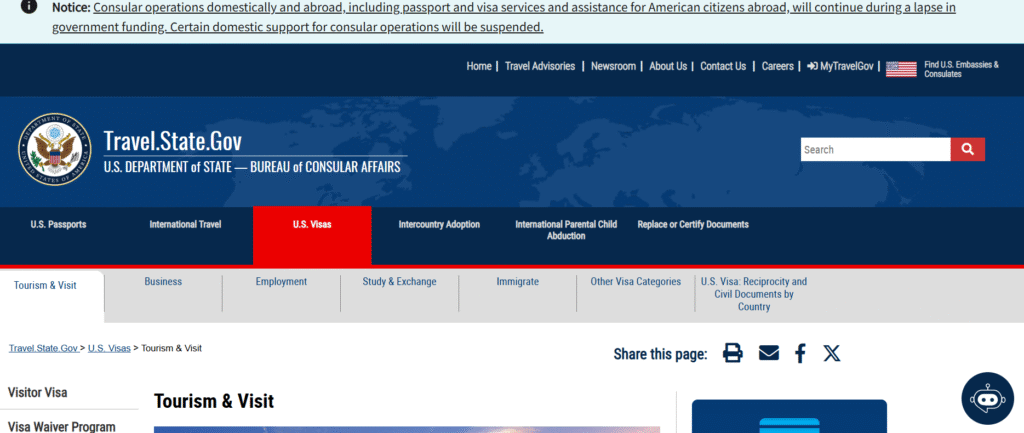
Difference Between B1 (Business) and B2 (Tourism)
Business related trips are taken under the B1 visa. This may take the form of conferences where one attends conference or even contract negotiation or meeting clients. The holder of B1 visa can never work in the U.S., however, he/she can practice a short-term business to a scope given by the State Department.
The B2 is the visitor visa, vacationist and visit visa. It also includes the traveling to pursue medical healthcare and undertaking minor leisure courses that are not academic.
B2 visa is appropriate to most of the general visitors. Individuals who have plans of combining business and leisure are generally on B1/B2 mix where they do whatever they want when they are on holidays.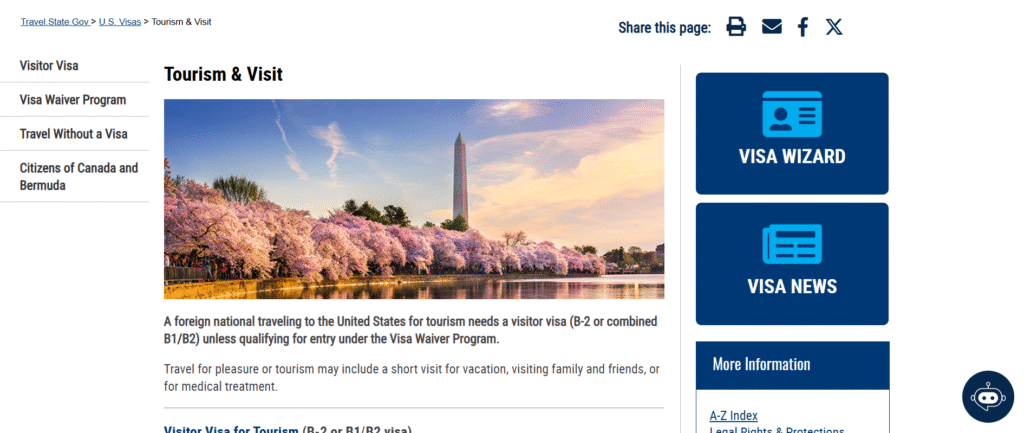
Step-by-Step Visa Application Process
When making an application to be visiting the United States as a tourist, there are a number of steps to be followed to the latter. Both should be stuffed with lots of care so that it does not bring in delays and turn-down. The process can be applied in most countries with the exception that the applicant is eligible to spend his time in the Visa Waiver Program (VWP). The 2025 applicants can easily be broken down as shown below.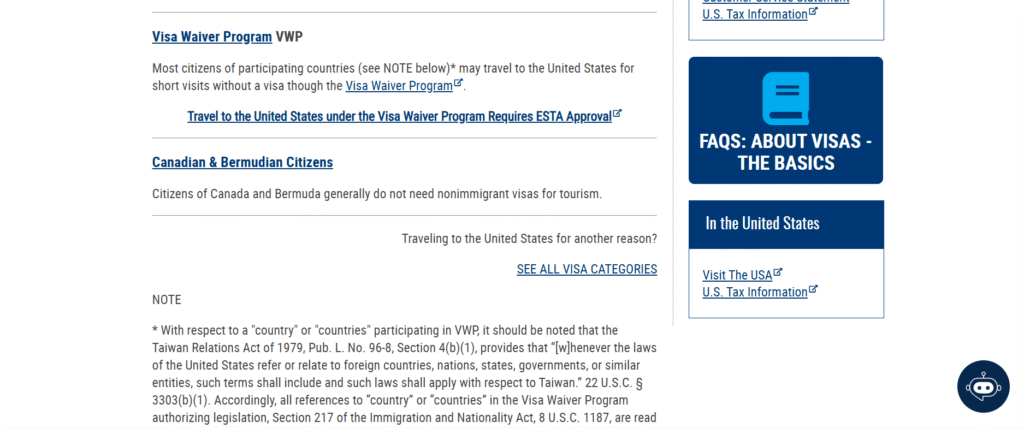
Step 1 – Complete the DS-160 Form Online
The formal internetized procedure of applying non-immigrant U.S. visa is the DS-160. It collects individual, traveling and background details on which your visa case will be founded upon. You should fill it in correctly as any errors will hamper or disqualify your application.
Consular Electronic Application Center (CEAC) site recommends the electronic application a new DS-160 form on the site where the applicants are required to fill in the new form electronically. You will be required to provide an image resembling a passport size image which matches the U.S. visa photo requirements. This form mandates that you include details about yourself such as names, purpose of travelling, time you want to remain with the U.S., your address in U.S. and work or study experience.
After filling the form you are presented a confirmation page where you are given a barcode. Keep it as it is because you have to bring it to your interview. The first area of identification is by making appointments.
The thing to remember by 2025: Don’t forget to check all sections of the paper and then submit it. An error with your DS-160, passport and other papers and you could be delayed in the administrative procedure.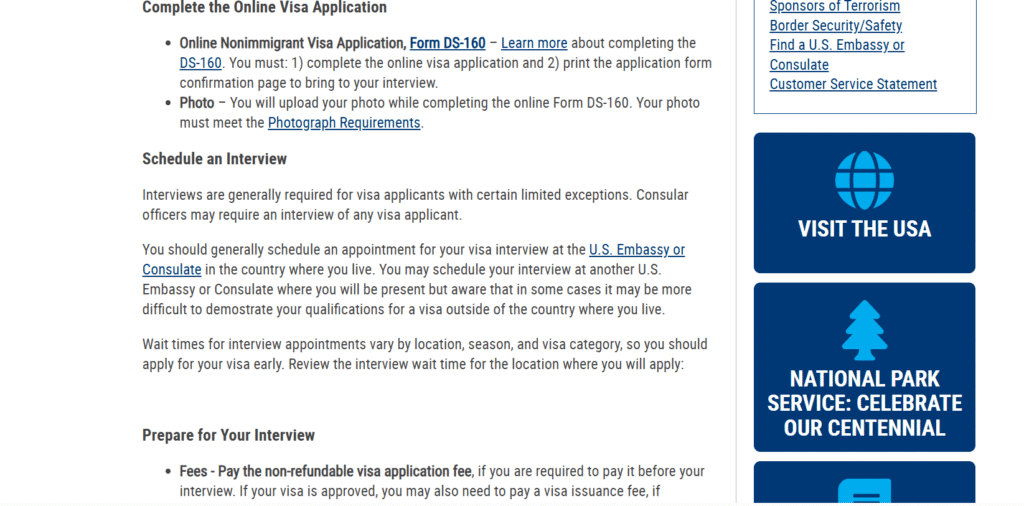
Step 2 – Pay the Visa Fee
Once you have submitted your DS-160 form, you will be required to pay the visa application fee and it is not refundable. In 2025 the standard fee that pronounced applicants of B1/B2 visas will pay is 185 USD. This ought to be a minor difference in line with the local currency and consular exchange rates.
Authorities on payment are different in countries. Most of the online payments made are facilitated by the embassies and consulates which offer the bank services or selected local banks. Upon payment, a receipt of payment will be given to you. You would be safe saving as it would need to book you an appointment.
It is necessary to add that this charge is not refundable even in case of your visa refusal. Therefore, also ensure that nothing will go wrong when it comes to payment.
In a case where your nationality charges a reciprocity fee (it is another issuance fee that is charged after the approval is received), you will pay it at a later time upon receiving a visa. This is on bilateral agreements between your nation and that of the United States.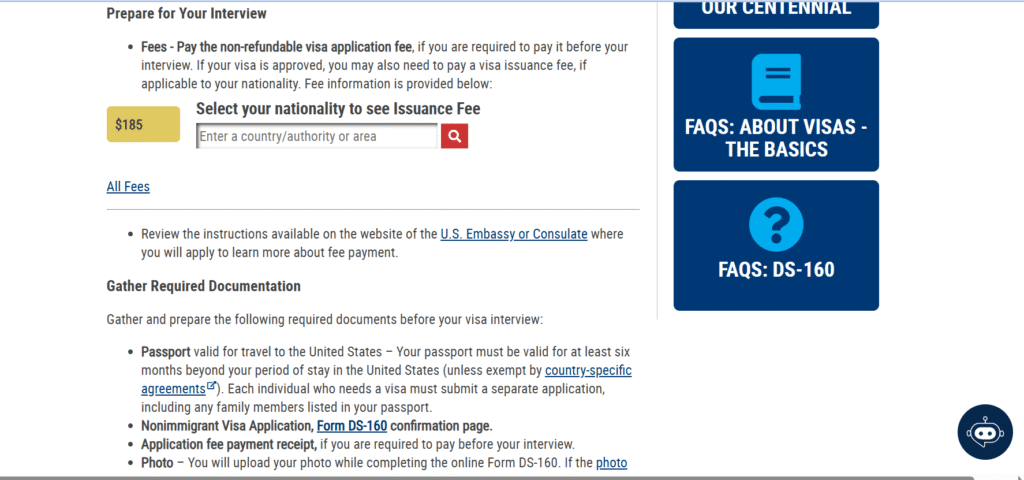
Step 3 – Schedule an Appointment
The next step after paying the visa fee will be to book an interview. It is done through the internet and it is termed as the official U.S. visa scheduling portal in majority of the countries.
Booking will be done through three items:
- The DS-160 confirmation number.
- Your passport number.
- The visa fee receipt number.
The applicants may also be expected to do two visits in Visa Application Center (VAC) during which they will be fingerprinted and photographed and may visit U.S Embassy or Consulate where they may get a chance to receive actual interview. It has locations that combine the two steps.
The other tip that should be in mind when selecting your day of appointment is one should not expect to get very similar wait time within the embassies itself. The congestion in the major towns is more likely to occur during holidays and the summer seasons. Early scheduling is crucial.
2025 prediction tip: If you are planning where to open your embassy, do not fail to check the visa waiting time on the real U.S. consular location. The availability is generally smoother in the smaller cities or otherwise in other consulates.
Step 4 – Prepare Your Documents
Correct documentations are important when one wants to win the visa war. In order to assess your motives of travel, history and finances capacity, the consular will examine your documents.
- The most significant documents of the case B1/B2 tourist visa are:
- A valid passport (one that contains at least six months left to stay in the United States).
- Checking of the barcode on the DS-160.
- The page of dispatching the visa appointment confirmation to sent.
- The visa fee payment receipt.
- A passport size picture (unless the picture is scanned online).
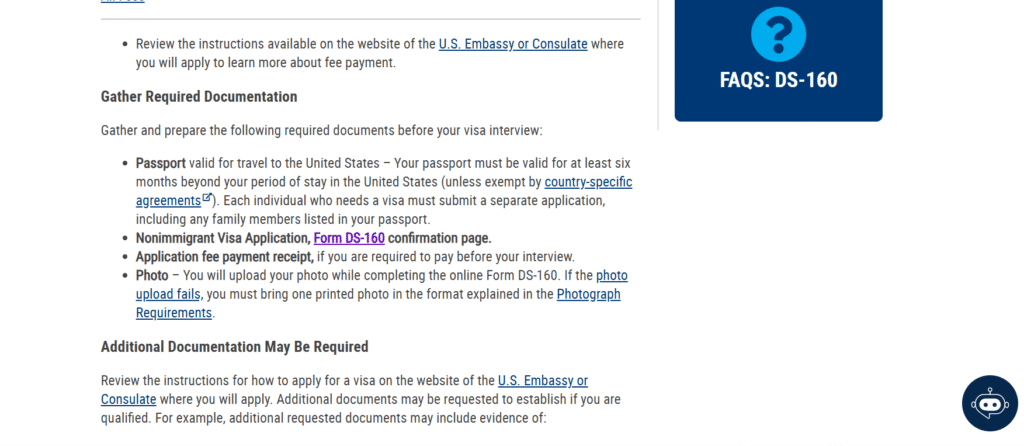
Your case is also stronger presented in the documents. These may include:
- Bank statements, tax statements or salary slips double up as evidence of being financially sound.
- Confirmation letter of employment, or registration of business, signifying affiliation with your home country.
- Hotel reservation, travel itinerary and Return flights.
- U.S. host (when riding a trip and/or visiting an event) invitation letter.
To the 2025, I would advise to make a folder a little more accessible by labeling all of the subdivisions. Thinness is appreciated by free-thinking officers in the consul. For example, do not put many papers in your file, but just include those documents that show your purpose of traveling and financial stability.
Step 5 – Attend the Visa Interview
U.S. tourist visa process is the most critical as regards to the interview. It determines your application either to be successful or not. The interview is in U.S Embassy or Consulate and most of the time it is within several minutes.
The security check will be done upon arrival. Electronics should never be brought in the house and thus leave mobile phones and accessories out in a locker room. After proving your documents and fingerprints you will be offered to the consular officer.
The policeman will interrogate you bluntly about the nature of your travels, your background and reasons. Common topics include:
- The reason why you would want to travel to the United States.
- How long you plan to stay.
- Who will finance your trip.
- Whatever you do in your work or at home country in your studying.
- Are you of the U.S. family/friends?
Be direct, candid and confident. This is not only because you are negotiating with this officer about what you have on your documents, but also because your manner of approach is also tested. Fluctuating and anxious reactions are problematic.
In case it is accepted, the passport will be returned to the officer to stamp visa. In the event of denial, the written clarification will be offered on the basis of the legal cause adopted in the U.S. Immigration and Nationality Act (INA).
Common Reasons for Visa Rejection
The visa procedure in the U.S. can be a hard task when a person does not meet the requirements to be eligible or presents his/her situation in the most effective manner. In job interviews, mistakes, absence of documents or pathetic excuses are the reasons that thousands of applications are denied every year. Understanding the causes of rejections will inform you not only on what and how to make costly mistakes, but also, increases chances of success even more. The visa policy in U.S. works under strict documentation and credibility rules. Any slight discrepancy will cause you to lose your application.
Visa officers screen all the candidates based on intent, documentation and integrity. They would like to know that the traveler will go back home after his trip and whether the person would be able to afford his or her financial life in the U.S. Knowing whether an individual is going to travel back home in the U.S. is among some of the things they do not want to know.
Incomplete Documentation
Very little documentation also happens to be one of the commonest reasons of visa refusal. The vast majority of the applicants fail to stick to the instructions or even overlook the insignificant yet important details. Any form and paper that you fill should fully align with your DS-160. It is also admissible in small inconsistencies such as a discrepancy in dates of birth, names or absence of signature.
Among the mistakes that are frequently made are forgetting of supporting paperwork like bank statement or employment letters, travel itinerary. The future applicants are likely to forget to submit evidence of returning such as employment letters, property documents or family obligation. These papers signify that you have something to go back to your home with a visit to the U.S.
The embassy desires to see that you have a purpose of visit and you will be able to finance your visit. The whole application is made up of:
- Valid passport (should have at least 6 months to date of travel)
- DS-160 marked confirmation page.
- Confirmation of visa appointment letter.
- Visa fee payment receipt
- Monetary security indications (bank statements or pay-slips).
- Letter on employer/business- registration (self-employed).
- Travels and flight back booking (not obligatory but helpful)
The information must be in place and verifiable. Submission of incorrectly completed or untidily assembled paper work can make your trustworthiness to the officer a point of doubt, and will lead to the rejection under 221(g) of U.S. Immigration and Nationality Act. Make sure that you read every and every page and stored photocopies of all that you will give.
Weak Ties to Home Country
The most critical factor in the U.S visa determinations is your membership of your home nation. Under the U.S. laws, every tourist visa applicant is a citizen of a different nation which is deemed to present the future immigrant unless it is established that this is not the case. This is meant to mean that it is up to you to show that you are coming to visit only to go home.
Weak ties are characterized by unemployment, fluctuating income, no family commitments, and lack of properties among others. These documents may foster the perception that the visa officer has that you are willing to overstay your visa. The better you know the person and the professional environment, the higher are the possibilities to be accepted.
- To build good relationships (close relationships), you can demonstrate:
- Letters of employment containing granted leaves.
- Certificates of registration of businesses.
- Property or rental ownership.
- Family papers e.g. marriage certificate or birth certificate of children.
- indication of life long learning (with the students)
During the interview, you should be sure to paint pictures of why you have come to the U.S and the reason why you are going back to your country. Avoid vague statements. Give certain details about your profession, family and future promises. The coloring visit home must be have a logical and realistic connection with the officers.
Visa Tips for 2025 Travelers
The application requires applicant preparation, truth, and patience in 2025 of and on U.S. visa application. It is a more computerized and transparent process yet the competition of slots in the interview and its strict limitations in terms of securing them, make it an obligatory factor to consider beforehand. It is better to know some smart things to save money, time, and stress.
Best Time to Apply
Everything is about having the right time. According to U.S.Embassy, a minimum of three months before you wish to make your intended trip, you should apply. This time will give you enough time to eliminate any unexpected issues like misplaced papers or postponed conferences.
High periods- some seasons of the year, the intervals between May and August, the winter holidays normally indicate longer periods of waiting, which is to be realized in conducting the interview. The benefit of using early date is that you are more flexible in terms of date of interviews and the schedule of your travels.
The digital appointment systems will be allowed in 2025, and the applicants will be able to observe the slots availability in real-time. Monitoring of other factors is local announcements of embassies since some of these embassies may have extra slots regarding conducting interviews during low seasons of the year.
The apps that have been developed early reduce the risk that might be presented in overlooking flight deals and accommodation of background total checks. It is namely more crucial to plan ahead in the situation of a visa refusal in the past or travelling to other countries.
How to Prove Financial Stability
One of the most crucial factors in acquiring a tourist visa to the U.S is that of financial stability. You need to convince the visa officer that you can cut all your expenses as long as you remain without using illegitimate employment or support.
The best way to establish financial strength is through transparent and continuous records of the bank. Preferably, you are supposed to notice stable deposit in your financial account within three-six months. The final consideration is not to deposit anything big right before the interview process because this causes one to appear suspicious.
- The financial records that can support it include the following:
- Majority of the latest bank statements of 6 months.
- Previous income taxes returns (Last two years)
- Company incomes or salaries.
- Documentary on real property valuation.
- History of payment among credit cards used and payments that are made on time.
Where it is another individual who has sponsored you to visit, then you will have to provide an affidavit of support and demonstration of his or her financial capability. Please add the income history of the sponsor, the documents of the relationship as well as a clear letter that points out that he/she wants to finance your visit.
There are also manifold numbers of applicants using digital bank statements and online financial checking devices in the year 2025. However, you are supposed to always have printed copies of your financial evidences to the interviewer as the electronic version is not always required.
Being financially responsible can also be an indication of how well you travel and also makes your case that you are a responsible minor tourist.
Frequently Asked Questions (FAQ)
Q1: How long does it take to process a U.S. tourist visa in 2025?
There will be a difference in terms of the embassy and season processing time. It is taking an average of two to four weeks after your interview date. The process then may take a long period especially during high travel seasons because of the administrative processing.
Q2: Can I apply for a U.S. tourist visa without an invitation letter?
Yes. Invitation letter is optional. You are also qualifying in case you are having clear travelling plans, hotel booking or an elaborate schedule. However, a letter by any of your family members or a friend to you will be quite useful as long as it is in accordance with your cause of traveling.
Q3: What should I wear to the visa interview?
Be fashionable and smartly dressed. You will not necessarily need to be dressed in a formal way, however, you must be perceived as someone who takes the process seriously and appreciates it. Do not put on extremely bling or excessively casual accessories or clothing.
Q4: Can I reapply if my visa is rejected?
Yes. One can also reapply the next time, but remember to correct the mistakes that made you receive a rejection. Remember to bring other papers and improve your explanation the next time you are on an interview.
Q5: Do I need travel insurance for a U.S. visa?
It is not a mandatory condition but highly recommended that the travel insurance be approved. It protects you whenever anything suspicious arises inside the hospitals or when traveling.
Q6: Can I extend my stay in the U.S. with a B2 visa?
Yes, but before your legal stay to the U.S.A. expires, you must apply Form I-539 to the U.S. Citizenship and Immigration Services. The unanimity of assuring permission also does not always occur and you should provide valid reasons as to why extension is needed.